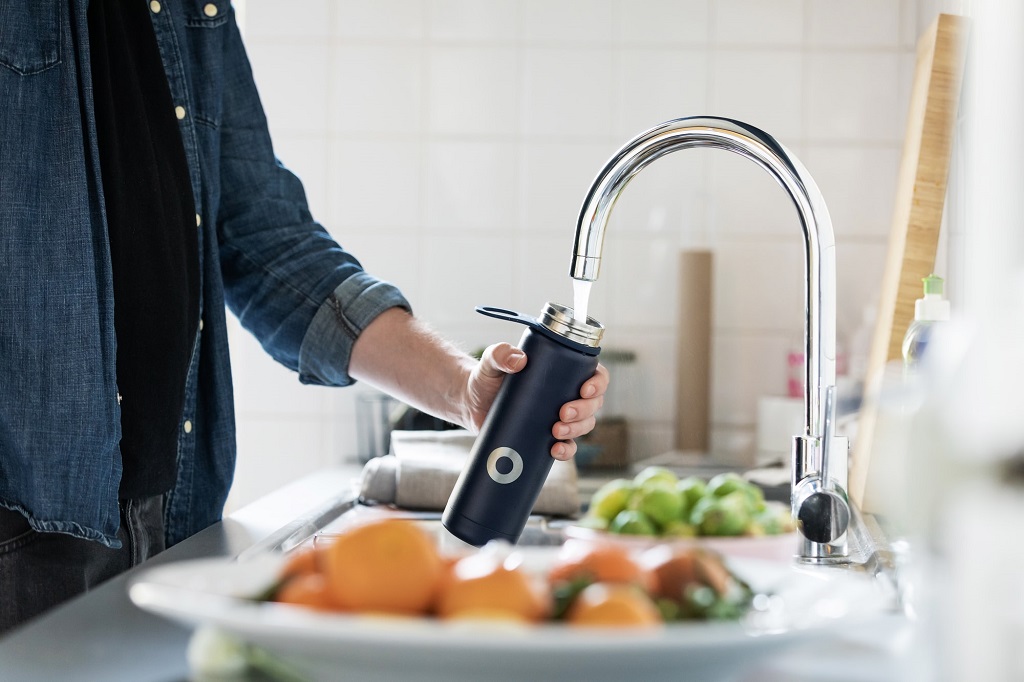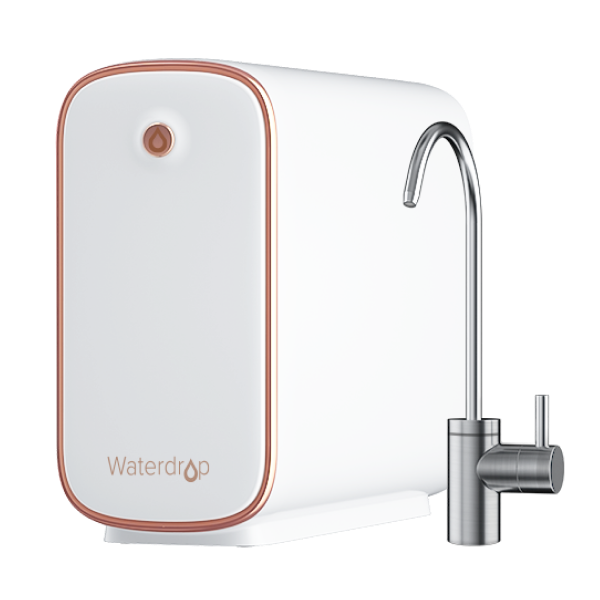What is a reverse osmosis system
The reverse osmosis system is a water filtration system using reverse osmosis technology. Before explaining what is reverse osmosis technology, we need to understand the concept of “osmosis,” which occurs most often with plant life.
When water is in the ground and plant roots absorb it, water passes through the wall of that root, which is the semipermeable membrane. While it does so, the water becomes more concentrated before it’s fully absorbed by the plant.
The concept behind a reverse osmosis filtration system is just the opposite. Instead of creating more concentrated water, it breaks down that concentration level and provides water with less concentration, or fewer substances along with the pure water. It does so by forcing water through filters and pressurizing it to help eliminate the contaminants that tend to come with tap water from public utilities or private wells.
Why do some reverse osmosis filtration systems need a tank
A water storage tank is very common to see for traditional reverse osmosis systems. It contains filtered water until the user gets them via a pressure pulp. Generally speaking, a large number of filtration systems on the market will come with a storage tank because many of these systems filter water very slowly.
A traditional system usually requires one minute or more to filter and process only three ounces of water. Therefore, a typical 12-ounce glass of water would take four minutes to fill. The tank helps provide that clean water faster. See more about pressure tank.
Why do some reverse osmosis filtration systems need a tank
Many models presently for sale offer the same tank functionality, but recently, consumers can easily find a reverse osmosis filtration system that does not have a storage tank.
The tankless system is an advanced reverse osmosis model that brings clean water fresh out of the tap. Unlike the traditional systems with slow filtration speed, these tankless systems filter water quickly, making the need for a storage tank obsolete.
The benefits of using a tankless system
Extensive water capacity
The ability to offer fast and offer continuous water flow is the most significant benefit for tankless systems. In general, the less equipment you need to depend on for anything, the better that system usually works, and avoiding the tank helps consumers have continuous access to clean drinking water without having to worry about cleaning or ultimately replacing a tank at some point.
Easy installation and maintenance
The tankless system is way easier than the traditional tank system in terms of installation. A well designed tankless system comes with clear and easy-to-follow installation instructions, which most people take approximately 30 minutes to install without hiring a professional.
With regards to maintenance, the tankless system offers a level of ease that differentiates itself from much of the reverse osmosis water filtration system market. Depending on the amount of tap water you filter and the exact model of the system that you purchase, you should be able to go several months on one filter.
When it’s time to replace that filter, which you will know because of the indicator on our units, all you’ll need to do is order a replacement and install it when it arrives. It’s as simple as unscrewing the old one and putting the new one in, which should take approximately three seconds.
Space-saving
Once you decide on getting an RO system, the next step towards installing your reverse osmosis filtration system involves planning for the available space where your system is going to sit.
Make sure that you obtain the measurements of that system before making that purchase. Because of the no tank design, the modern RO system saves at least 50% of the undersink space comparing with its traditional counterpart. You could enjoy a neat undersink look and also additional room for kitchen storage.
Low drain ratio
Because of the nature of reverse osmosis, waste water is unavoidable for an RO system. Yet, the modern tankless system wins big when comparing the amount of waste water generated.
The wastewater-water ratio is about 1:3(three cups of waste water) for traditional systems, but this is not the case in modern purification systems, thanks to its more efficient filters. The average wastewater ratio is either 1:1 or 1.5:1 in most cases. Therefore, these systems are more efficient and will prevent unnecessary water loss.
No secondary pollution
That said, the water tanks in traditional water purifiers are flawed. For instance, they can facilitate the growth of bacteria, except they are regularly flushed and cleaned. This would not be a problem if the cleaning process were not expensive.
Likewise, the container smells rubber, which comes from the rubber that separates air and water. This, sometimes, gives the filtered water a foul odor. That’s seen as a benefit by many consumers, as they no longer have to maintain and/or clean that tank.
Best tankless reverse osmosis system
At this point, it is pretty clear that the smart, modern RO water filtration system is the winner. If you need some recommendations on which brand to choose for the tankless system, Waterdrop is the first brand that comes with the tankless RO system on the North American market.
The brand is famous for its edge-cutting tankless RO systems and you could choose one that fits with your home needs. Below is a recent model from Waterdrop that offers excellent filtration performance at a very reasonable price.
This new system comes with a compact design that could save up to 70% space and can fit under most of the kitchen sinks. The core of the system is the 5-in-1 composite filter that combines five different filtration media, meaning it would take the least space and maintenance effort to achieve an optimized filtration outcome.




